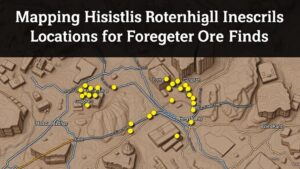Exploring Historical Battlefields for Lost Ammunition and Weaponry
Exploring Historical Battlefields for Lost Ammunition and Weaponry
The practice of exploring historical battlefields for lost ammunition and weaponry has gained significant traction in recent years. With a focus on preserving history, understanding warfares impact, and boosting local economies through tourism, this field attracts historians, archaeologists, and hobbyists alike. This article investigates the methodologies employed, highlights notable case studies, and addresses the implications of these explorations.
Historical Context of Battlefield Exploration
Military conflicts have been fought across various terrains, leaving behind artifacts that tell poignant stories of those who participated. recovery of items such as bullets, weaponry, and personal effects provides insight into military strategies, technologies used, and the life of soldiers. The exploration of battlefields can be traced back to the Civil War in the United States, particularly at sites like Gettysburg (July 1-3, 1863). The recovery of artifacts from this battlefield not only serves historical interest but also informs the narrative of American history.
Methodologies for Battlefield Exploration
The processes involved in battlefield exploration can typically be grouped into several methodologies, including:
- Metal detecting
- Geophysical surveying
- Hand excavation
Each methodology provides unique advantages and limitations. For example, metal detecting allows for the efficient identification of ferrous and non-ferrous materials, which is crucial in recovering ammunition and weaponry. Geophysical surveying employs techniques like ground-penetrating radar (GPR) and magnetometry to identify buried artifacts without disturbing the ground.
Legal and Ethical Considerations
Exploring battlefields raises several legal and ethical concerns. Many nations have laws that protect historical sites from unauthorized excavation and damage. For example, in the United States, the Archaeological Resources Protection Act (ARPA) prohibits the removal of artifacts from federal lands without permission. In Europe, the 2001 UNESCO Convention on the Means of Prohibiting and Preventing the Illicit Import, Export and Transfer of Ownership of Cultural Property stresses the importance of preserving historical sites.
Ethical considerations extend beyond legality. Explorers must consider the impact of their activities on the site itself and the potential to disturb hallowed ground. Respect for the memory of those who fought and died should guide any actions taken on these sites.
Case Studies of Successful Battlefield Explorations
Notable examples of successful battlefield explorations include:
- Gettysburg National Military Park: In the 1990s, a team of archaeologists conducted a systematic survey at Gettysburg, recovering over 100,000 artifacts, including ammunition and personal items belonging to soldiers.
- Waterloo Battlefield: Following recent advancements in technology, a project launched by the Royal Belgian Heritage Institute utilized magnetometry and GPR to uncover previously hidden relics, including artillery shells from the 1815 battle.
- Normandy Beaches: Continued exploration of D-Day landing sites has yielded artifacts such as weapon casings, helmets, and parts of landing craft, enriching our understanding of this pivotal event in World War II.
Implications for Historical and Cultural Understanding
The recovery of lost ammunition and weaponry contributes profoundly to our understanding of historical events. Artifacts can inform historical narratives by providing tangible evidence of battle conditions, soldier experiences, and technological advancements in warfare. For example, the discovery of a cache of bullets from the Battle of Antietam (September 17, 1862) has provided valuable information about the type of ammunition used and the extent of warfare technology at the time.
Conclusion and Future Directions
As technology advances, the field of battlefield archaeology will likely evolve, becoming even more precise and efficient. integration of drones, improved magnetometry, and enhanced data analysis techniques promises to provide archaeologists and historians with richer insights into the past.
For individuals and organizations seeking to engage in this field, understanding the legal frameworks, ethical mandates, and emotional significance of these sites is essential. Future endeavors in battlefield exploration should prioritize collaboration between historians, archaeologists, and local government bodies to ensure the continued preservation of our shared heritage.

